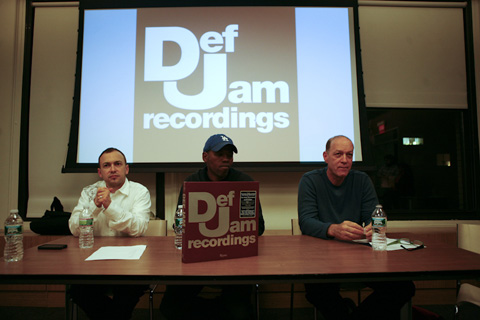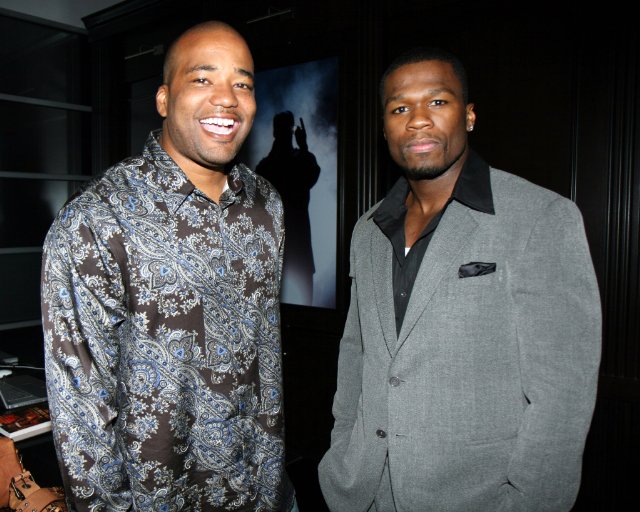If you a true fan of hip-hop you may not know who Dan Charnas is and all that he has contributed to the art form that you admire but in a debate about who is the best rap mogul you may have referenced his work without even knowing it. As the author of “The Big Payback: The History of the Business of Hip-Hop,” Charnas delves into the culture’s growth from a form of musical expression in the inner-city to a global, multi-billion dollar industry. The book is a thick Encyclopedia Britannica-like read that consists of 672 pages covering everything from the breakup of the Roc-A-Fella Record dynasty, the rise and fall of The Source magazine, the birth and dominance of Def Jam Records, and the role that risk-takers played in getting rap music on the radio. Charnas’ accurate and poignant portrayal comes from the 300 executives, artists, and industry insiders that he interviewed during his research including Russell Simmons, Rick Rubin, Lyor Cohen, and Chris Lighty.
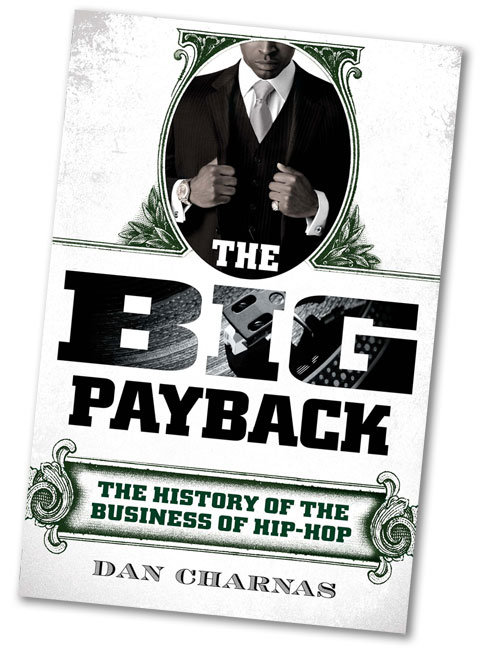 It wasn’t until Lighty’s untimely death on August 30, 2012 from an apparent suicide that “The Big Payback” was overly-emphasized by the media as the only biographical account available that thoroughly covered Lighty’s business acumen, which is an incredible feat when you consider that the book was released two years ago. It’s often assumed that Lighty’s only involvement with 50 Cent was in creating the blockbuster deal with Glaceau Vitaminwater. The partnership that Lighty negotiated enabled the rapper to promote the popular energy drinks while also obtaining a minority share of the brand that reportedly earned him upwards of $100 million after taxes when the company was sold to Coca-Cola in 2007. However, “The Big Payback” credits Lighty with being an integral part of of 50’s life when he was recovering from being shot nine times and being dropped from Columbia Records as a result of the violence surrounding him. Lighty helped create the necessary buzz for 50 Cent with the momentum gained through his mixtapes and by initiating the meetings that led to his eventual signing with Eminem and Dre Dre’s Shady/Aftermath roster which catapulted his career.
It wasn’t until Lighty’s untimely death on August 30, 2012 from an apparent suicide that “The Big Payback” was overly-emphasized by the media as the only biographical account available that thoroughly covered Lighty’s business acumen, which is an incredible feat when you consider that the book was released two years ago. It’s often assumed that Lighty’s only involvement with 50 Cent was in creating the blockbuster deal with Glaceau Vitaminwater. The partnership that Lighty negotiated enabled the rapper to promote the popular energy drinks while also obtaining a minority share of the brand that reportedly earned him upwards of $100 million after taxes when the company was sold to Coca-Cola in 2007. However, “The Big Payback” credits Lighty with being an integral part of of 50’s life when he was recovering from being shot nine times and being dropped from Columbia Records as a result of the violence surrounding him. Lighty helped create the necessary buzz for 50 Cent with the momentum gained through his mixtapes and by initiating the meetings that led to his eventual signing with Eminem and Dre Dre’s Shady/Aftermath roster which catapulted his career.
Along with Bill Adler, Charnas also co-authored “Def Jam Recordings: The First 25 Years of the Last Great Record Label” that revealed Lighty’s immense loyalty to Lyor Cohen highlighted by a confrontation he had with Suge Knight on his own West Coast turf after Def Jam signed Warren G, an artist that Knight allowed to slip through his hands. Lighty diffused the tension and devised an amicable deal that would make Def Jam money and Death Row happy.
The reason why Charnas has been able to chronicle hip-hop with such accuracy is due in part to the crucial contacts that he made over the years. He wrote for The Source magazine during its infancy in 1990 when it was run by students at Harvard University. He later worked at Profile Records, the label home to Run DMC, Special Ed, and Dana Dane and was later recruited by Rick Rubin to run hip-hop at Def American Recordings. I spoke with Charnas about his book, which recently has been rediscovered, and discussed the life and legacy of Chris Lighty.
Please tell me more about your background and what you are working on now.
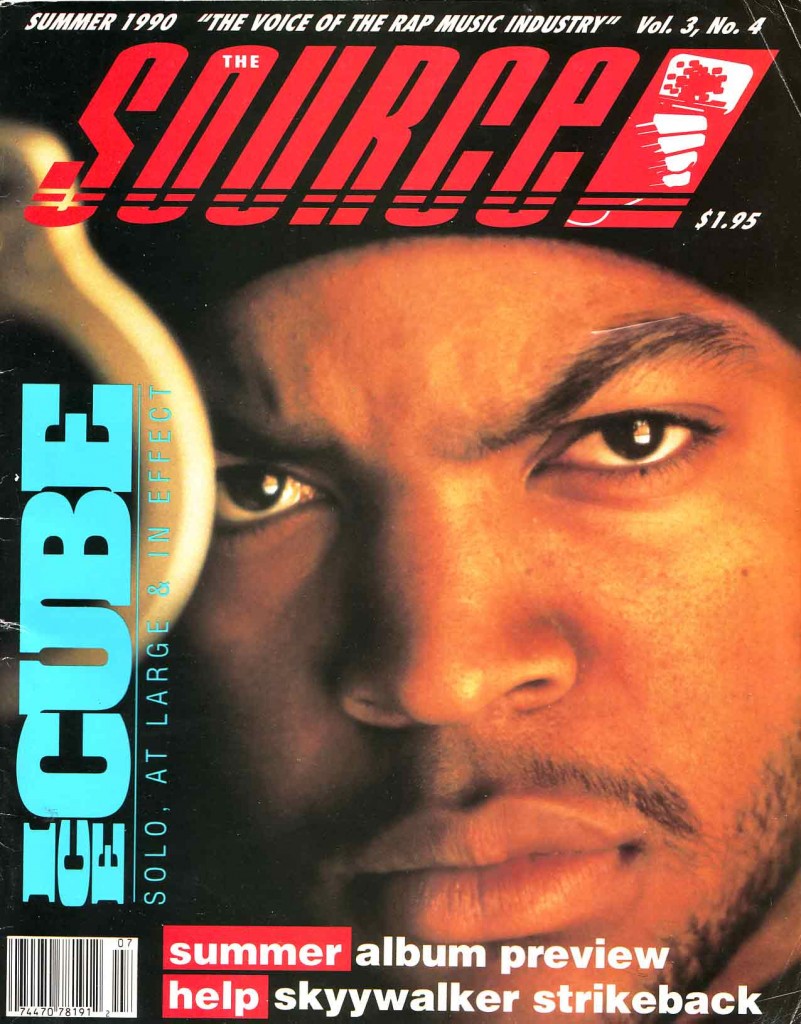 I started as a writer then an editor for my college paper at Boston University. When I graduated, I started writing professionally for newspapers like the Boston Phoenix and a small magazine that had started out of Harvard University called The Source and I actually ended up becoming the writer for a lot of the very first cover stories. I did the second LL Cool cover, the very first Ice Cube cover, the very first Public Enemy cover and that sort of began my career in music journalism. At the same time, I had taken a job in the mailroom of Profile Records which is one of the seminal rap record labels and that turned into a promotion job which turned into an A&R job which finally, because of my connections in the music business and the mentorship of some very nice people, I got connected with Rick Rubin in 1991 and then ended up going to work for him at Def American for seven years and that resulted in me working on “Baby Got Back” with Sir Mix-A-Lot and “Let Me Clear My Throat” by DJ Kool and Chino XL and a few others. Right now, I am an author and a freelancer and I also am the marketing director for a media company called ooVoo. We do chat and streaming for a young multicultural audience and that involves a lot of stuff with hip-hop culture and so I help to make those connections.
I started as a writer then an editor for my college paper at Boston University. When I graduated, I started writing professionally for newspapers like the Boston Phoenix and a small magazine that had started out of Harvard University called The Source and I actually ended up becoming the writer for a lot of the very first cover stories. I did the second LL Cool cover, the very first Ice Cube cover, the very first Public Enemy cover and that sort of began my career in music journalism. At the same time, I had taken a job in the mailroom of Profile Records which is one of the seminal rap record labels and that turned into a promotion job which turned into an A&R job which finally, because of my connections in the music business and the mentorship of some very nice people, I got connected with Rick Rubin in 1991 and then ended up going to work for him at Def American for seven years and that resulted in me working on “Baby Got Back” with Sir Mix-A-Lot and “Let Me Clear My Throat” by DJ Kool and Chino XL and a few others. Right now, I am an author and a freelancer and I also am the marketing director for a media company called ooVoo. We do chat and streaming for a young multicultural audience and that involves a lot of stuff with hip-hop culture and so I help to make those connections.
Explain “The Big Payback” which has resurfaced again. For those who haven’t read it, please talk about its purpose.
There’s definitely been a spike but the book is more of a slow burn. It’s basically the 40-year history of how hip-hop went from nothing to something. It went from being a subculture on the streets of two of the most disenfranchised and notorious ghettos of the United States in the Bronx and Harlem to being a global culture and global business worth billions of dollars and how hip-hop moved over the course of 40 years to being an outsider of the culture to the center of mainstream culture. More importantly, it also has the stories of the people who helped make that happen. Previous to this book, the story has never been told. There have been books about Def Jam. There have been books about Suge Knight and Death Row but very little wholistic views of how the whole thing happened. Many of those books tend to be anti-business when in fact I thought that business was very essential to the growth of hip-hop and not in a negative way. It begins in 1968 in Harlem and ends in 2008 in Harlem with the election of Barack Obama. It’s a true American business book.
One of the most intriguing stories in the book is the end of the business relationship between Jay-Z and Damon Dash and that final meeting where Dash is told that he is no longer a partner in Rocawear. It’s important because many people weren’t aware of the other partners involved that helped make that final decision.
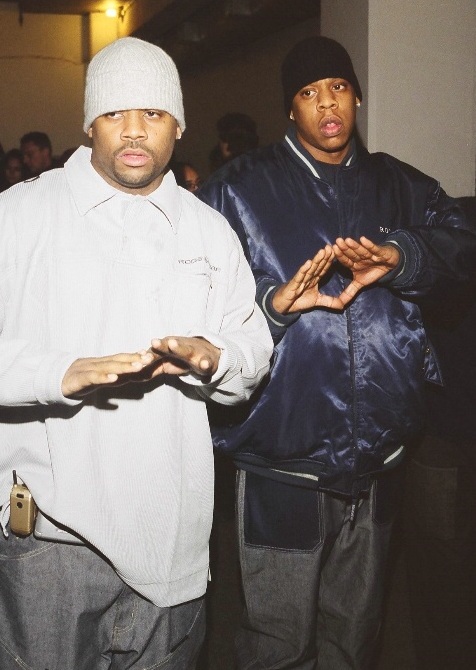 Jay and Damon didn’t know anything about the fashion business so Russell Simmons introduced them to Alex Bize and Norton Cher who were two Ukrainian immigrants who were somewhat successful in the rag trade so they went into business with Jay and Dame and I believe it was a four-way split with half for Jay and Dame and half for Alex and Norton. I’m not exactly sure what the splits were. For Rocawear, if there was any split between Jay and Dame about the direction it would definitely mean that if the two other partners were a unit their votes would go to one or the other.
Jay and Damon didn’t know anything about the fashion business so Russell Simmons introduced them to Alex Bize and Norton Cher who were two Ukrainian immigrants who were somewhat successful in the rag trade so they went into business with Jay and Dame and I believe it was a four-way split with half for Jay and Dame and half for Alex and Norton. I’m not exactly sure what the splits were. For Rocawear, if there was any split between Jay and Dame about the direction it would definitely mean that if the two other partners were a unit their votes would go to one or the other.
What eventually led to the split?
There’s lot of different theories. Some people say Steve Stoute got in between Jay and Dame. That really didn’t come up in my reporting too much. I think Steve Stoute is a really smart guy and he had a relationship with Jay that transcended any other relationship that was happening whether with Dame or anybody. So if there is any kind of opportunity for Steve to get closer to somebody like Jay and to get out of the way of dealing with Dame, who could be very difficult to deal with, then I think that he would naturally take advantage of that. But I don’t think it took Steve Stoute to drive Jay away from Damon Dash. I think it would have happened anyway. I think Jay ended up having people around him who could help him do what Damon was helping him to do and it turned out to be John Meneilly. It turned out to be Steve in some respects. That was just a part of Jay’s evolution. The thing about the way Dame has been described is that he is the guy who you want to blow down the door to get in the room but once you get in the room Damon keeps blowing and it’s not a good look and a way to maintain partnerships which then have to be working relationships. They have to be friendships. They can’t be hostile. When Dame would get in a room he would be hostile. That’s what I tried to convey.
So you are saying that Damon got in his own way?
Yes, I don’t think Jay was looking for a way to edge him out. I think Dame just started alienating people and made business harder for Jay once Jay was on that next level. I also think Dame was very insecure so he didn’t want other people around Jay and maybe felt his own limitations so that all he could do was to yell and scream. The music business is filled with screamers and a lot of them have the same root issue which is: “I don’t know how to do shit and I don’t understand the situation that’s going on right now so I am going to yell because I’m frustrated and I want people to think I’m doing my job and seek out more from the situation.”
That’s interesting. When people speak of Damon they rarely give him credit for discovering Kanye West, putting together the Hard Knock Life tour, setting up the film division, acquiring Cam’ron and the Diplomats and turning that into a success.
Yeah, I think it’s awful. That’s why I spend so much time on him in my book because Dame did all of that stuff. There are people who currently work for Rocawear who miss the Dame days because Dame was a creative. He had ideas. He wasn’t an idiot. He knew shit. He was just incredibly abrasive and could be cruel.
In the book, you mentioned his buyout for Rocawear being $12 million. Is that all?
Yes, it’s even less than that. I think it ended up being between $7 million and $9 million. Yeah, in the press it was something like $30 million but in reality he didn’t get much more than $7 million or $9 million.
I already mentioned one of the most important stories in “The Big Payback.” What story are you most proud of?
The whole story about what happened with radio. Basically it tracks how rap was not allowed on pop radio for the most part. It wasn’t welcome. There were some very brave folks in radio who changed that. Greg Mack was one of the first programmers to try to do something with a daytime rap format but he didn’t have the resources. He was at a low power radio station called KDAY in Los Angeles. Since radio is a product of a white supremacist economy a lot of the folks who worked in radio were white so these were white folks who went against the grain in the industry to change things and they didn’t change it because hip-hop would make them a ton of money. Hip-hop was a gamble. Sales people didn’t want to sell a hip-hop station. It was the opposite fear. But they did it because they wanted young listeners and they understood this was the music of American youth. And they were right and eventually it did become profitable.
You used to write for The Source. What are you feelings on the magazine now?
It ain’t the same. It’s another magazine called The Source.
You were there during a very important time in its history when Dave Mays and Benzino were the founders.
Benzino wasn’t even around then. He was not around until way after they moved to New York. He was just an artist that Dave Mays managed. Then when he came around he alienated a lot of people, threatened some people, and Dave kind of stood by and let it happen. Dave has his own view of the story and that’s in the book. I wanted to make sure to represent Dave as well in there. I’m not speaking now as journalist about that. I’m speaking now about someone who worked at The Source and witnessed what I witnessed. Benzino was not a founder of The Source.
Please explain what the “Def Jam Recordings” book offers.
The Def Jam book is an oral history and also a coffee table book so it’s really visually stunning. It’s a feast for the eyes.
What I found interesting about the Def Jam book is that not everyone on the label was willing to talk even though they played a major role in the success of the company. Talk about the difficulties in trying to get that done.
If people aren’t going to talk to you there’s nothing you can do. All you can do is report around them. Sometimes reporting around them is great though because if you have the discipline to report around somebody and draw a nice circle around them then when it’s time for you to really go for that last time you actually have some ammunition. You can say, “I’ve already written about you and I want to give you a chance to hear about it and comment.” That’s huge and that’s a tool that any journalist has.
DMX isn’t interviewed in the book but there are quotes from him from his “E.A.R.L.” autobiography. Is that because he wasn’t accessible to speak to you?
No, DMX was not somebody who I planned on interviewing or wanted to interview because he is not a business figure. My boss at the time was Smokey Fontaine who wrote that book for him. I had access to use his work, his recollections and to use the stories most importantly to the people who worked at Def Jam. The Lyor Cohen, Julie Greenwald story, and Kevin Liles story kind of was the DMX story.
Chris Lighty’s story is told in great detail in both books. Let us know more about who Chris Lighty was.
Chris Lighty is almost the personification of the business of hip- hop. He started in the South Bronx like hip-hop did. He got in the hustle and grind with his crew, the Violators. They hung with [DJ] Red Alert. They carried crates for him. They made sure nobody messed with him. But they also did some illegal business on the side and in my interviews with Chris and some of the folks in the Violator crew it was nothing unusual for the time. They could be really hotheaded but I don’t think they were thugs really. They were a group of guys who had a lot of loyalty to teach other. People like Red Alert saw that for Chris his first reflex wasn’t to go crazy and to go wild. His first reflex was to be reflective and to think. Because he was a thinker Red Alert made him a road manager for Boogie Down Productions, his premier group. Then after that he became a road manager for other acts like Jungle Brothers then A Tribe Called Quest. Then he actually took over management when Red Alert stopped managing folks which was huge. Lyor then brought him into the Rush artist management fold. Chris got a great education from Lyor then when Rush Management folded, Chris could cherry-pick those artists and start his own management company. But Lyor sort of kept him around by giving him a production deal for Violator Records which ended up signing Foxy Brown which was huge. Chris also brought Jay-Z to Lyor’s attention and brought John Meneilly to Jay-Z. He is just a matchmaker in many different ways.
Finally, after the Polygram buyout of Def Jam he declared his independence. He did a short-lived but ill-fated partnership with Mike Ovitz [co-founder of the Creative Arts Agency] which had staggering implications in the year 2000. Somebody like Chris Lighty from Castle Hill in the Bronx doing a joint venture with one of the most powerful men in Hollywood just shows you what kind of guy Chris Lighty was and what kind of ambition he had. Even though that partnership didn’t work out Lighty resuscitated the career of a Queens rapper who had been shot in the head basically and took seven to 10 shots to the body. He was dropped off Columbia records after one successful single and Lighty took this guy’s career and turned him around and sold him to Eminem and Dr. Dre and created 50 Cent. 50 Cent then created one of the most played songs in the history of SoundScan with “In Da Club.” Then of course, he began to do branding deals for 50 Cent and his other artists and the ultimate branding deal obviously was the Vitaminwater deal that allowed 50 Cent to get equity in the company in return for his endorsement so it’s just staggering what he did. That’s why I wanted to tell that story because it’s an amazing story.
You mentioned the deal that Lighty had with Michael Ovitz. What did that deal consist of and why did it fail?
They were partners in a management and Ovitz was supposed to get movie roles for Busta Rhymes and do the Hollywood portion of the deal. Ovitz immediately started complaining that Lighty wasn’t bringing in enough money and that Lightly had misrepresented what his management company could bring in terms of revenue. He wanted to start looking at Lighty’s expenses and Lighty’s response was that it’s a management company for music and you have foul years and you have big years. So during years where Busta is not putting out an album or Missy isn’t putting out an album it is going to be tough. And Ovitz was just not a pleasant person to deal with, I gather, and he wanted to renegotiate the deal and Chris said, “Hell no!” So Ovitz went into litigation with him and ultimately Chris prevailed in terms of getting out of that partnership and getting free. Chris took it very personally. In retrospect, Chris was a guy who took on the stresses of the world and didn’t take things lightly. Even looking back at his Twitter feed and seeing how much he talks about being stressed was interesting. That didn’t start just this year. I remember when I interviewed him and looked at some of the tweets he put out there, he was very much affected by life. Life wasn’t easy for Chris Lighty but in some ways the life of business was more stressful than running with the Violators when he was a kid.
Do you recall your last interaction with Lighty?
Yes, I do. It was in 2010. I wanted to thank him for the time he spent with me and one of my first errands for Rick Rubin was to go to his parent’s house and dig out some old stuff of his like master tapes and thinks like that. One of the things I found was a stack of old Rick Rubin and Russell Simmons business cards from the early Def Jam days in pristine condition. I had it for years at Def American and when I went on to work for Forest Whitaker, I still had some left over. I thought it was something Chris Lightly would like to have. I had given one to Russell as well. I gave one to Chris and put it in a little frame and dropped it off at his office. It was a four-word email that he sent back to me. It read: “Love the card. Classic.”


